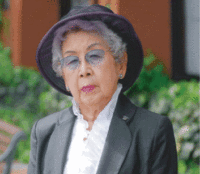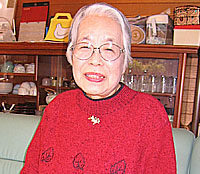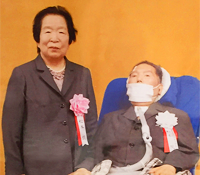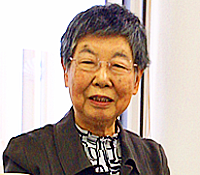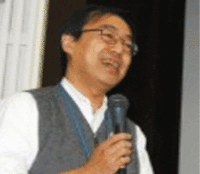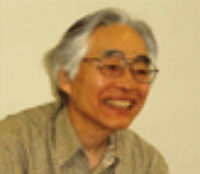Interviews
Interviews List
This page contains interviews of patients’ advocacy movement leaders in Japan shortly after the end of World War II. We documented their hardship and struggles together with their activities, candid opinions and ideas during that tumultuous period.
-
Date: March 25, 2009
Place: “Osa House”, Mitsuko Kojima’s residence, Nagoya, Japan
Interviewers: Tateo Ito and Shiori Nagamori
Translator: Shiori Nagamori
In response to a family member contracting tuberculosis (TB), and her resulting volunteer work at the Orimoto TB hospital in Tokyo, she became a medical social worker (MSW).
Her tireless efforts to improve the hospital’s meal services developed into the just cause that led to the emergence of patients’ groups.
As a pioneer of medical social workers, she advocated for the needs of recovering patients’ i.e. employment, rehabilitation and marriage.
Her testimony regarding the daily necessities for the disadvantaged at the famous “Asahi Human Rights Lawsuit” in the 1950’s was crucial.
In addition, she was a social worker at “Tokyo Colony”, a workplace for TB patients, and later became the secretary-general of “Zencolo”, an organization for people with disabilities.
Further on, she plied her expertise as a researcher at Nihon Fukushi University in Nagoya.
-
Date: December 19, 2009
Place: Sonoko Umesaki’s residence, Yokohama, Japan
Interviewers: Tateo Ito and Shiori Nagamori
Ms. Umesaki was born 1932 in Tokyo.
In 1959 she and her husband welcomed a daughter that was born with a serious congenital heart disease.
She needed extensive medical care that was expensive and therefore required a subsidy.
Ms. Umesaki communicated the need for government subsidies in such situations to patients and parents of patients, all over Japan.
She also promoted dialogue between these groups.
Through her efforts, the “Heart Disease Children’s Group” was founded in 1963.
It was created 10 years prior to many other patients’ groups in Japan.
Unfortunately, her daughter passed away in 1964, because of her condition.
Ms. Umesaki continued managing the organization enthusiastically for almost 30 years.
In addition, along with mothers carrying babies on their back, she petitioned the Diet for subsidies and other reform needs.
They successfully acquired subsidies for heart disease patients.
She continued to work hard for welfare reform in support of people with disabilities.
-
Date: September 16, 2016
Place: Rui Matsumoto’s residence, Ogata, Akita, Japan
Interviewer: Tateo ItoMs. Rui Matsumoto is the widow of Shigeru Matsumoto, who was the former honorary president of the Japan Amyotrophic Lateral Sclerosis Association. He passed away December 2015. He was 83 years old.
Amyotrophic Lateral Sclerosis (ALS):
A disease that gradually paralyzes muscles.
ALS sufferers lose mobility also talking, eating and breathing functions, but they remain cognitive. -
Date: December 10, 2018
Place: Aichi Medical Association
Interviewers: Tateo Ito and Shiori Nagamori
Translation: Shiori Nagamori
Ms. Sawako Kawamura, a public health nurse, is a pioneer of Nanbyo patients’ care.
In the 1960’s, she helped organize a SMON (Subacute myelo-optico neuropathy) patients’ group.
Further, in 1972, she was involved in making the “Nanbyo Plan” by the Ministry of Health and Welfare.
She made the words “Nanbyo” and “home care” popular in the healthcare vernacular.
She has committed herself to the care of Nanbyo patients and the education of nurses for over fifty years.
-
Date: March 25, 2009
Place: Medical Education Development Center, Gifu University, Japan
Interviewers: Tateo Ito and Shiori Nagamori
As a Hokkaido University school of medicine student, Fujisaki san was a volunteer leader at Hokkaido Nanbyouren. In his role as a volunteer, he joined a medical task team charged to identify areas in Hokkaido with limited medical resources for Nanbyo sufferers.
During this time, he even tried carrying patients from their wheelchairs to other floors in the building because of the lack of an elevator.
In social situations with community leaders such as mayors and public health nurses, he was also able to learn more about local medical services.
This experience offered him a valuable insight regarding the care and requirements of Nanbyo sufferers.
He is now sharing his vast knowledge and experience with medical students and doctors throughout Japan.
-
Date: February 23, 2009
Place: Osaka Nanbyouren, Osaka Prefecture Joto Building, Osaka, Japan
Interviewers: Tateo Ito and Shiori Nagamori
In 1971, Onami san contracted chronic glomerulonephritis (CGN) in his early 30’s.
A year later, (1972) the Osaka Nanbyouren was founded.
In 1973 he became a secretary there and remains so today.
He introduced many unique activities, such as lecturing about Nanbyo, karaoke events, art exhibitions and created a theatrical company that he also participated in.
Because of his efforts and other contributions, in 2006, the Osaka Nanbyouren was entrusted as a Nanbyo Counseling and Support Center by Osaka Prefecture.
An ongoing goal and fruition of his dream is the construction of a free-standing home to be known as the Osaka Nanbyo Center.
-
Date: March 24, 2009
Place: Kyoto, Japan
Interviewers: Tateo Ito and Shiori Nagamori
In 1972, Mr. Kanoh’s child was hospitalized with nephrosis.
The medical fees were exorbitant, so he created the “Kyoto Nephrosis Group” and lobbied for a more equitable fee structure.
In 1974, he consolidated other patients’ groups into the “Kyoto Nanbyouren” of which he has managed for over 30 years.
-
Date: March 26, 2009
Place: Osaka, Japan
Interviewers: Tateo Ito and Shiori Nagamori
In 1971, after meeting MG (Myasthenia Gravis) sufferers in Tokyo, Ms. Asano created a patient group for fellow sufferers in Osaka.
In 1972, she was invited to join the “Osaka Nanbyouren”. They energetically published handwritten newsletters which were not only referenced by patients but also doctors and nurses. Later she was engaged in organizing self-help group activities which she is still part of.
-
Mr. Yukitoshi Matsuda and Ms. Harumi Ando
Date: June 25, 2009
Place: Gifu, Japan
Interviewers: Tateo Ito and Shiori Nagamori
Gifu Nanbyouren was founded in 1974.
Vice-President Teruko Miyagawa, a public health nurse and confined to using a wheelchair, worked to develop and improve community access for wheelchair users. She was the first to introduce telephone booths that could accommodate wheelchairs and also ramps and automatic doors at Gifu city hall.
Their organization also introduced and managed the lift bus service which again accommodated wheelchair users.
These efforts to a great degree contributed to helping Nanbyo patients and people with disabilities integrate better into society.



